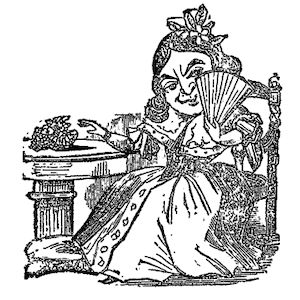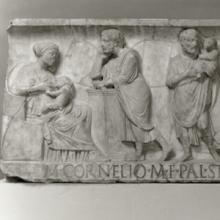Browse
Women

Teaching
Long Teaching Module: Bhakti Poets
This teaching module outlines the Bhakti Movement - a Hindu religious movement originating in the 6th century CE that was inspired by a number of prominent women poets.

Review
Florilegium Urbanum
Inspired by the medieval concept of a textual anthology illuminating specific topics, Florilegium Urbanum allows the user to explore more than 200 short sources and excerpts from longer texts dealing with medieval English towns.
Review
Broadside Ballads Online
This website highlights 16th-, 17th-, and 18th-century broadside ballads. These were popular songs (frequently with lavish woodcut illustrations) sold at a relatively affordable price and widely circulated.
Review
Fine Arts in Hungary
A handy feature of this site is the Guided Tours, designed to help users 'discover the territory of Hungarian fine arts.'
Review
COLLAGE The London Picture Archive
Reproductions of paintings, watercolors, drawings, and sculptures provide more than a glimpse into the history of London and London life from the 15th century to the present.
Review
Electronic Text Corpus of Sumerian Literature
the collection is arguably made more valuable and useful by its focus on a limited cultural and historical context and by its presentation of texts that are less well known and more difficult to locate.
Review
Yad Vashem - The World Holocaust Remembrance Center
The museum Yad Vashem is one of the foremost research centers for holocaust studies in the world.
Review
South Texas Border, 1900-1920: Photographs from the Robert Runyon Collection
These images represent a valuable visual record of life in the south Texas borderlands during the 1910s and 1920s, as well as an important window onto a relatively understudied phase of the Mexican Revolution.
Teaching
Short Teaching Module: Codex Mendoza (16th c.)
In Mexico City, towards the middle of the 16th century, Nahuatl-speaking painters created the Codex Mendoza, one of the most lavish indigenous accounts of history and moral behavior known today. Across pages of expensive, imported paper, the painters of the C.

Teaching
Short Teaching Module: Roman Children’s Sarcophagi
I use images of two Roman marble sarcophagi for topics on children and childhood in undergraduate courses on ancient society, family, gender, representations, and historiography. The sarcophagi can be used to study one period of antiquity or to examine changing notions of childhood over time.